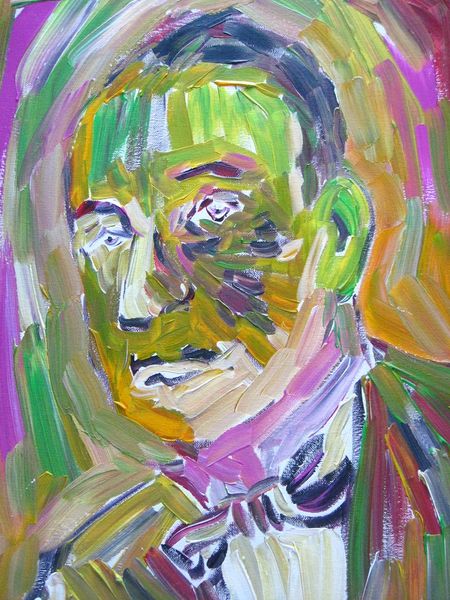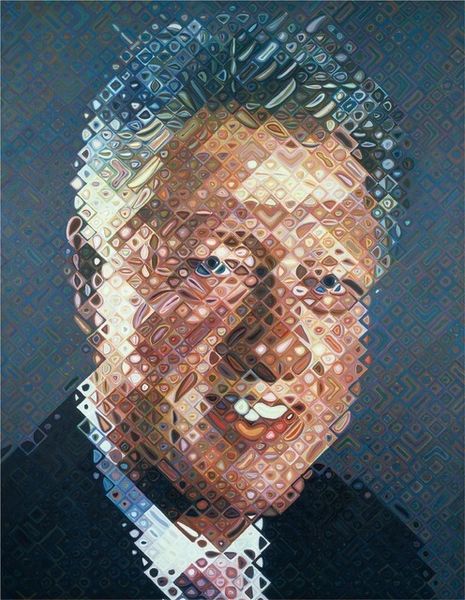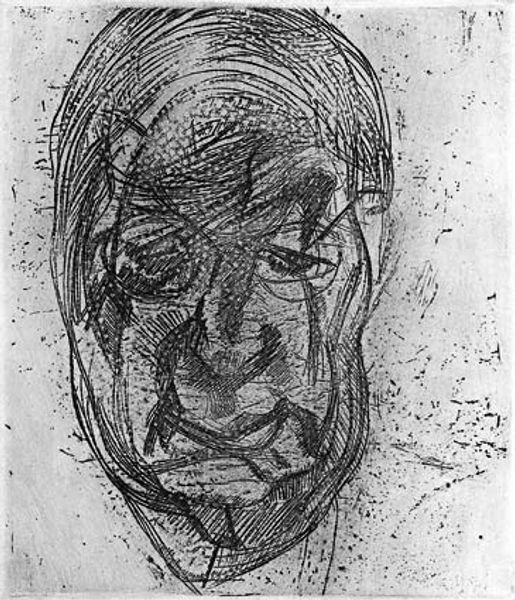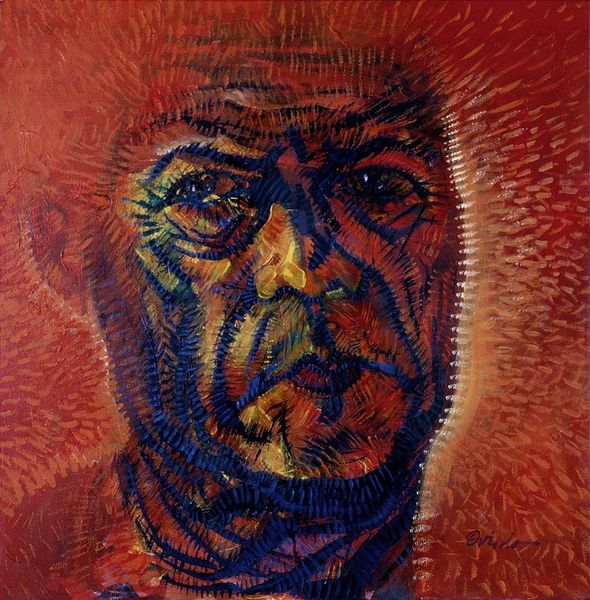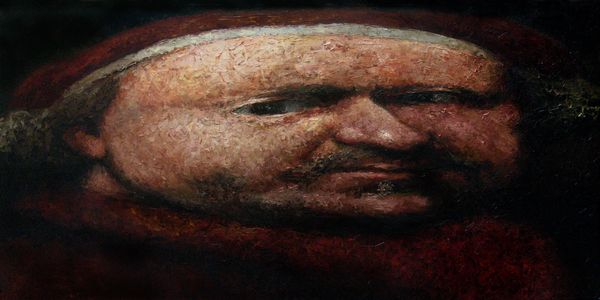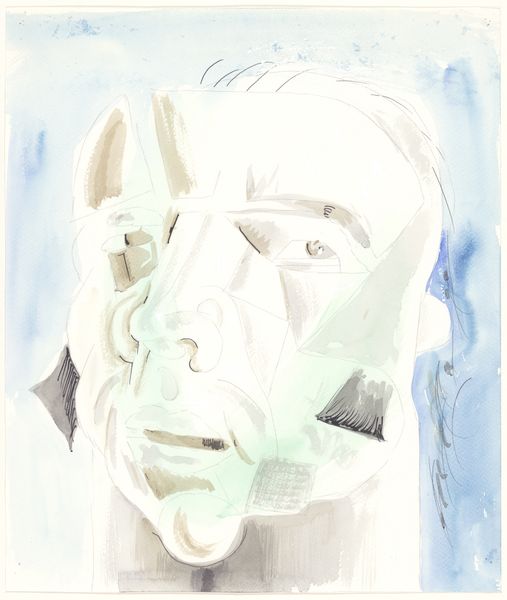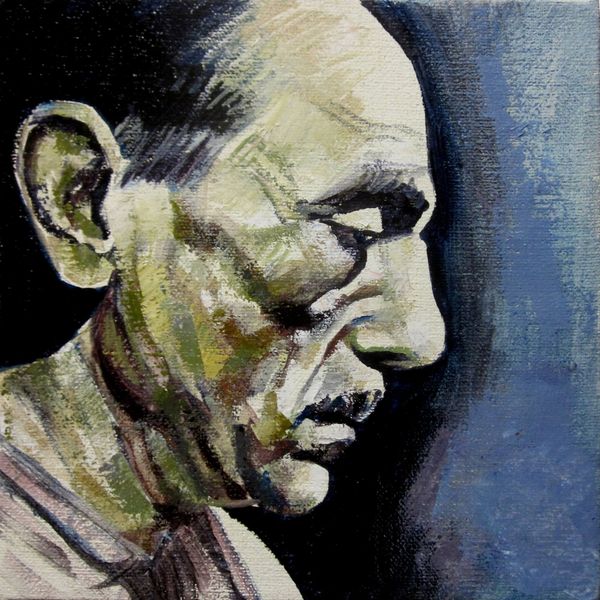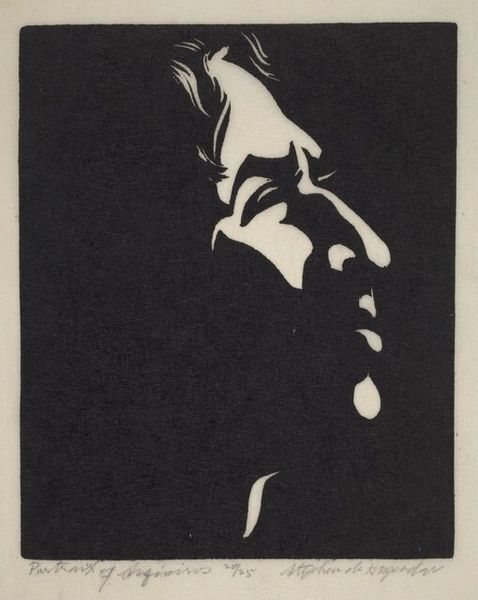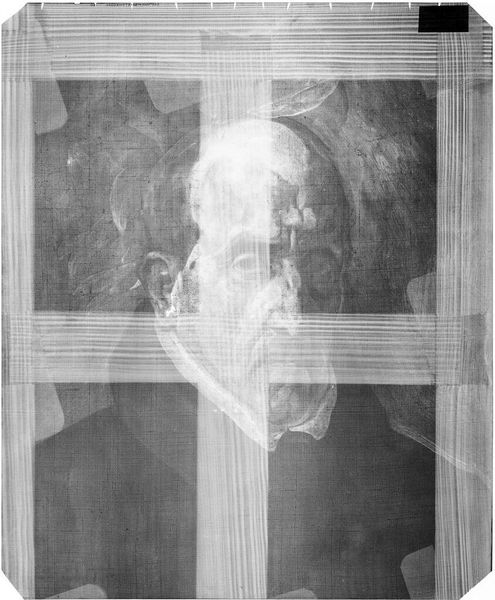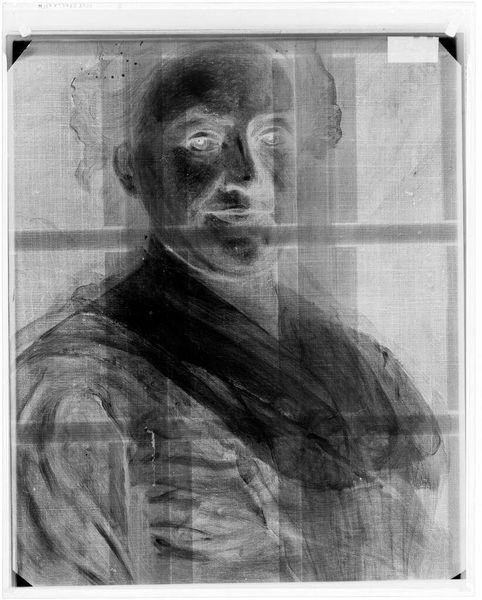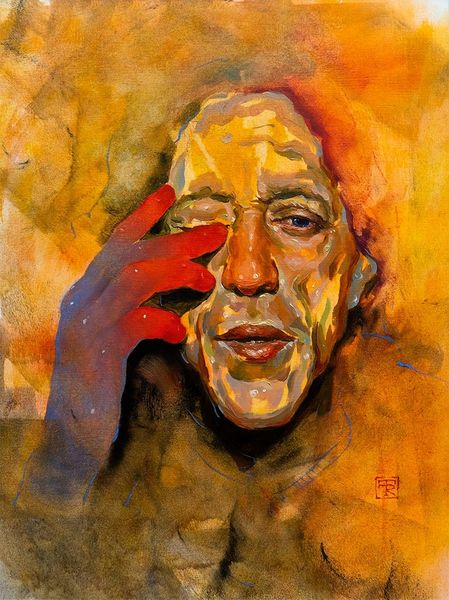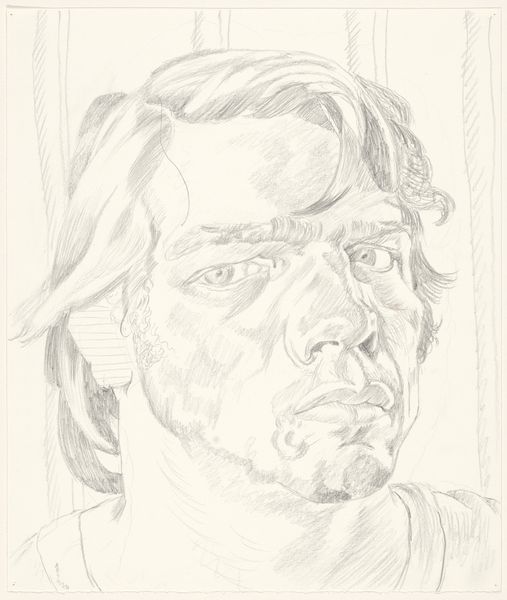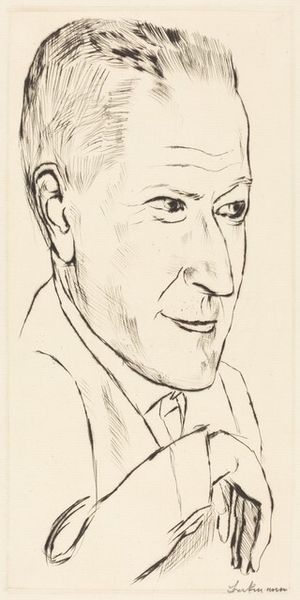
Dimensions: overall: 259.1 x 213.4 cm (102 x 84 in.)
Copyright: National Gallery of Art: CC0 1.0
Editor: This is Chuck Close's "Jasper," painted in 1997-98 using acrylic paint. It's a portrait, but it’s made up of all these colorful squares…it almost feels pixelated. What's so important about this piece? Curator: Close's work is fascinating in how it intersects with ideas around representation and perception, especially given his own experiences with disability. Think about it: Close created this after a spinal artery collapse left him paralyzed. Editor: Oh, wow. I didn't know that! Curator: This seemingly simple portrait raises crucial questions: Who gets to be represented, and how? How do our bodies—both the artist's and the subject's—influence the artwork itself? The grid structure also recalls mugshot photography. Editor: How so? Curator: Early mugshots used a grid to standardize facial documentation and potentially criminalize marginalized groups. Are there echoes of those systems here? The subject isn’t criminalized per se but categorized or broken down through a system of vision that mimics institutional power. What does it mean for Close, in his physical condition, to recreate a standardized system like this? Editor: That’s… heavy. I see how this isn't just a pretty portrait then. It challenges how we *see* portraits. Curator: Exactly. Close’s lived experience and process critique representational power. This becomes a political and aesthetic project, asking viewers to confront their assumptions about portraiture and disability. Editor: I'll never look at a Chuck Close portrait the same way. I really appreciate that contextualization!
Comments
No comments
Be the first to comment and join the conversation on the ultimate creative platform.
